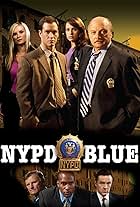

If you were a TV critic from 1956 to 1976, you would have witnessed some big changes in the business: the rise and fall of the Western as the dominant primetime genre, or the color TV boom, or CBS' shift from silly rural comedies to socially conscious ones like All in the Family and M*A*S*H. If you covered the beat from 1976 to 1996, you would have written about Hill Street Blues and its many imitators, the classic years of SNL, and the early days of original cable programming. Almost any 20-year span would give you a front row seat to enormous artistic and technological change. As of this week, I've been professionally writing about television for exactly 20 years(*), and it's safe to say that the only two-decade period that featured a more radical transformation in how television was made and consumed would be back when the medium was first introduced into America's living rooms.
- 6/2/2016
- by Alan Sepinwall
- Hitfix
IMDb.com, Inc. takes no responsibility for the content or accuracy of the above news articles, Tweets, or blog posts. This content is published for the entertainment of our users only. The news articles, Tweets, and blog posts do not represent IMDb's opinions nor can we guarantee that the reporting therein is completely factual. Please visit the source responsible for the item in question to report any concerns you may have regarding content or accuracy.
